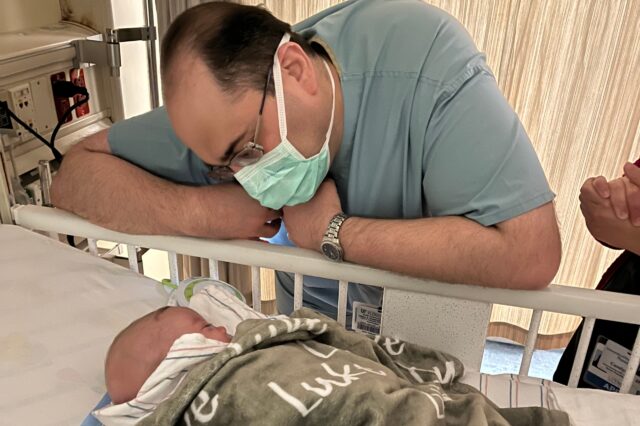A More Normal Life for Luke
Almost 34 weeks into her pregnancy, Megan’s water broke. Panicked, knowing that she was about to deliver early, she was rushed to the hospital. It was not long…

Update your location to show providers, locations, and services closest to you.
Spasticity is stiff or rigid muscles. It may also be called unusual tightness or increased muscle tone. Reflexes (for example, a knee-jerk reflex) are stronger or exaggerated. The condition can interfere with walking, movement, speech, and many other activities of daily living.
Muscle stiffness; Hypertonia
Spasticity is often caused by damage to the part of the brain that is involved in movements under your control. It may also occur from damage to the nerves that go from the brain to the spinal cord.
Symptoms of spasticity include:
Spasticity may also affect speech. Severe, long-term spasticity may lead to contracture of muscles. This can reduce range of motion or leave the joints bent.
Spasticity may be caused by any of the following:
This list does not include all conditions that can cause spasticity.
Exercise, including muscle stretching, can help make symptoms less severe. Physical therapy is also helpful.
Contact your health care provider if:
Your doctor will perform a physical exam and ask about your symptoms, including:
After determining the cause of your spasticity, the doctor may refer you to a physical therapist. Physical therapy involves different exercises, including muscle stretching and strengthening exercises. Physical therapy exercises can be taught to parents who can then help their child do them at home.
Other treatments may include:

Deluca GC, Griggs RC. Approach to the patient with neurologic disease. In: Goldman L, Schafer AI, eds. Goldman-Cecil Medicine. 26th ed. Philadelphia, PA: Elsevier; 2020:chap 368.
McGee S. Examination of the motor system: approach to weakness. In: McGee S, ed. Evidence-Based Physical Diagnosis. 4th ed. Philadelphia, PA: Elsevier; 2018:chap 61.
Oleszek JC, Davidson LT. Spasticity. In: Kliegman RM, St. Geme JW, Blum NJ, Shah SS, Tasker RC, Wilson KM, eds. Nelson Textbook of Pediatrics. 21st ed. Philadelphia, PA: Elsevier; 2020:chap 730.





Almost 34 weeks into her pregnancy, Megan’s water broke. Panicked, knowing that she was about to deliver early, she was rushed to the hospital. It was not long…

This story is a follow-up to “Home is Where the Heart Is” that was published in April 2016 Janan Campbell’s mother, Dawn, describes her 4-year-old son as a…
